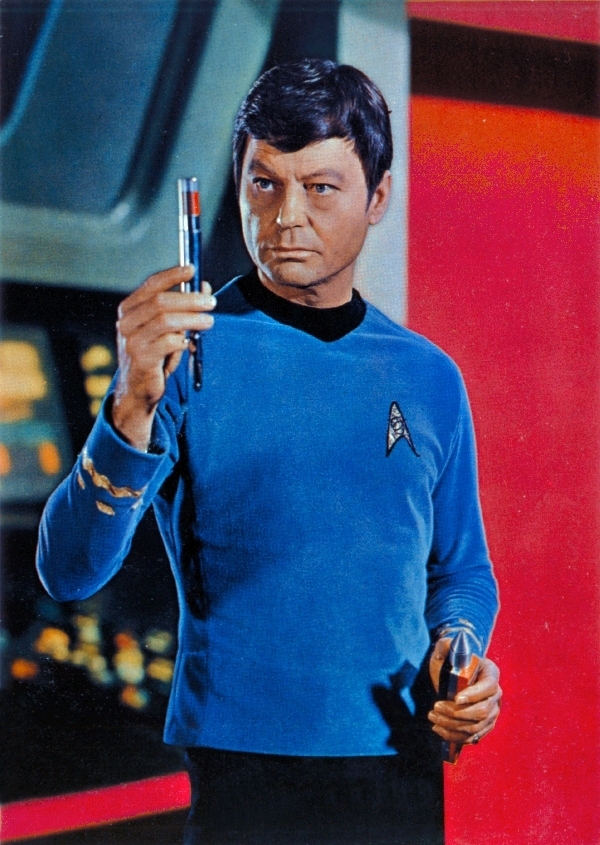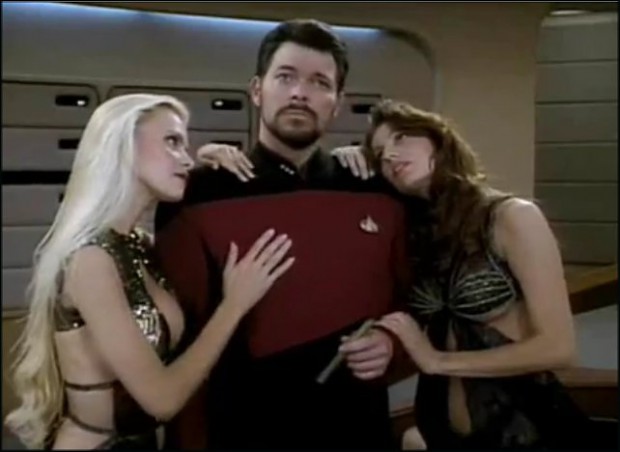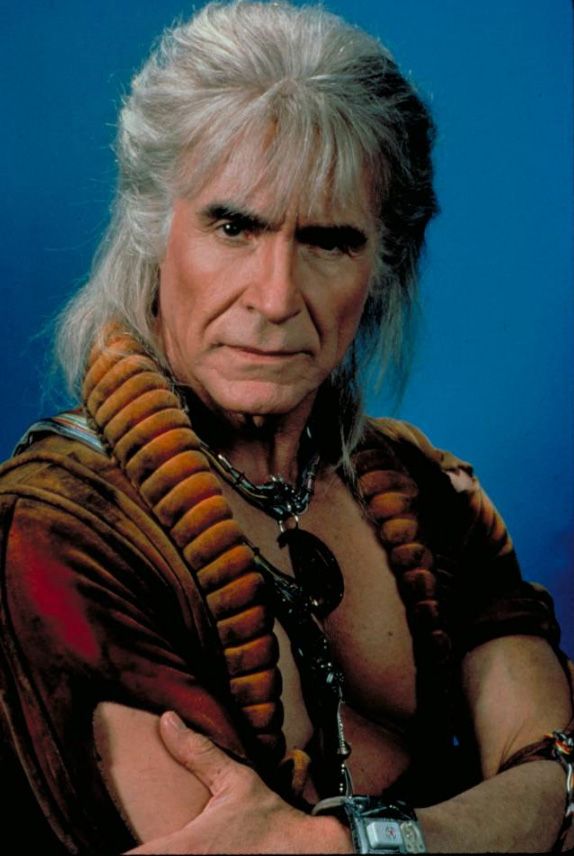Both evoke images of fair play, decency and utopian "this is how life should be" ideals. I'm not sure there have been many cricket/Star Trek crossovers in the past (although there was a particular episode of Deep Space Nine that saw the crew playing a team of Vulcans at a game of baseball, which is about as close as it got) so I thought I'd give it a go by choosing my all time Star Trek XI.
1. Kirk Edwards (West Indies)


Kirk Edwards has played 17 tests, 16 ODIs and 19 T20 internationals for the West Indies. He showed early promise in the early 2000s by vice captaining the West Indies under 19s, but waited for 5 years after his first class debut to score his maiden first class century in 2009. He came to prominence in 2010 when he scored an unbeaten 171 for the West Indies A side against the England Lions and was elevated to the full squad as a replacement for Adrian Barath at the 2011 World Cup. He made his Test debut versus India the following year and his second innings hundred on his debut raised hopes of a new force in the West Indies middle order. Alas, this never quite materialised for him and was dropped from the Test and one day squads in 2014. Now 31, perhaps his best days are behind him, especially considering the current state of Caribbean cricket. He had a brief stint as Vice Captain of the West Indies One-day squad, but never made the top job, robbing me of being able to introduce him as Captain Kirk Edwards. You can't have it all I guess.
2. Barney McCoy (Australia)

Barney played 2 First Class matches for New South Wales between 1920-24. He was a leg spin bowler and right handed batsman, taking just 2 wickets in his FC career and with a highest score of 21. Barney passed away in 1970 aged 74, nearly a year after the final episode of the original Star Trek series aired. Whether in his latter years Barney was ever referred to as 'Bones' we'll never know, but it's certainly an opportunity missed if he wasn't.
3. Datta Gaekwad (India)


Yes, I know the spelling is slightly wrong but Data doesn't seem to mind does he?
Datta played 11 Tests for India between 1952 and 1959. His first Test innings in 1952 at Headingley is notable as India were reduced to 0-4 with Fred Trueman taking all 4 wickets, Datta being his 4th victim. He captained India on the 1959 tour of England in the absence of the usual captain Hemu Adhikari. He lead the team to a 5-0 defeat in a series that was dogged by infighting, reportedly due to divisions between those players from Bombay and those, such as Datta, from Baroda. He did not play another Test following the disastrous series and finished his career with just 1 Test fifty. Come on Data, it's rude to laugh..
4. Steriker Hare (England)

Steriker Hare would be a but a footnote in the annals of Essex County Cricket Club were it not for 1 notable performance in a match against Derbyshire in 1921. Steriker made just 3 First Class appearances for Essex as a right-handed batsman. His highest score was 98 which he made in a stand of 251 with Johnny Douglas for the 9th wicket on his first class debut. Despite missing out on the ton, this partnership remains, for the 9th wicket, the highest of all time for Essex, the 2nd highest in English First Class cricket and the 4th highest in world First Class cricket.
Steriker quit cricket soon after this to become an accountant, working in Baghdad, Iraq from 1928 until 1959.
5. Michael Klinger (Australia)


The name is so close I couldn't possibly leave him out. He's certainly got the forehead for it anyway.
Australian Michael Klinger has been around for quite a while now and has had a prolific last few seasons as the Gloucestershire captain. He began his First Class career playing for Victoria in the 1998-99 season. Bizarrely Michael has the honour of being the only player in Australian cricket to be stranded on 99 not out after a declaration. This occurred in 2000 when the Victoria captain Paul Reiffel decided to call the players in, causing great upset to Michael, eventually leading him to leave Victoria the following season.
Michael Klinger has also competed in the Jewish Maccabiah Games (often referred to as the 'Jewish Olympics') in 1997 playing cricket for Australia and winning a silver medal. These games were unfortunately remembered for 4 other Australian competitors being killed just prior to the opening ceremony in Tel Aviv, when a bridge they were walking over to reach the stadium for the athletes parade collapsed.
Apart from at the Maccabiah games, Michael never represented Australia at Test or One-day level, but is another who is having a relative renaissance period late in his career. Another prolific season for Gloucestershire in 2016 and who knows? We could see him following Chris Rogers and Adam Voges footsteps into the Aussie Dad's Army.
6. Alex Wharf (England)


Worf has been in more episodes of Star Trek than anybody else. He was a main character in 2 series and has been in 4 films. In short, trekkies couldn't get enough of him and there's even a Twitter campaign going on right now called #wewantworf which is a crowdfunding campaign to start a new Star Trek series based around everyone's favourite Klingon.
Alex Wharf has never been as much as a fans favourite in the world of cricket, but like Worf he also won't go away. Alex played for 3 counties in the 1990's and early 2000's and was a decent allrounder, most notably for Glamorgan from 2000 until his retirement in 2009. Before researching him I knew he had made an appearance for England but I was slightly surprised to find that he played as many as 13 ODIs. He actually did pretty well, taking 18 wickets at an average of 24. I remember him being in a line of slightly frustrating "bits and pieces" players that England tended to throw in to one-day squads at the turn of century, along with the likes of other steady-eddies such as Mark Alleyne, Ian Austin and Matthew Fleming.
At the end of his professional playing days, Alex qualified as an umpire and was added to the ECB's First Class Umpires list in 2014. He is now regularly seen on the First Class circuit with a burgeoning reputation.
7.Francis Romulus Burchell (Great Britain)

Yes that's right, I've written Great Britain rather than England. Francis Romulus Burchell was a member of the 1900 Great Britain Olympic cricket team when they beat France in Paris to win the gold medal. This is the only time that cricket has ever been an Olympic sport and reading about the history of it, it's not difficult to see why. Originally, 4 teams were scheduled to play - Great Britain, France, Netherlands and Belgium. The Netherlands and Belgium pulled out before the tournament, leaving GB and France to battle it out for the gold. Neither team were selected by the national bodies. Great Britain were represented by the Devon and Somerset Wanderers club team (of which Francis was a member) and France by mostly British Ex-pats who happened to live in Paris.
Francis's contribution to the win was minimal - he was 0 not out in the first innings and didn't bat in the second. He didn't bowl a ball and didn't take a catch.
8. Andrew Ducat (England)

Andrew Ducat is a distinguished fellow (unlike his decidedly dodgy namesake above - Gul Dukat of Deep Space Nine). There are quite a few cricketers over the years who have played both high level cricket and football, but Andy is one of a small group of individuals who have represented their country at both. He played 429 First Class matches for Surrey between 1906-1931 with an impressive average of 38. He was even named as one of Wisden's cricketers of the year in 1929. His one and only Test appearance coming the following year against Australia at Headingley.
Whilst playing cricket in the summer, his winters were spent on the football field, spending time with First Division teams Arsenal, Fulham and Aston Villa, the latter being the most successful club in England at the time. He was awarded the first of his 6 England caps in 1910 scoring 1 goal in a 1-0 win against Wales. Upon retiring from football in 1924, he turned his hand to management, spending a rather unsuccessful 2 years at second division Fulham.
Andrew is also the holder of 2 'firsts' in English cricket, both of which I'm sure he would gladly relinquish given the chance:
He is reportedly the first batsman in English cricket to be out in 2 different ways with 1 ball - his bat breaking when edging a ball to slip with the resulting shards hitting the stumps (he was given out caught rather than hit wicket officially.
He is also, unfortunately, the only player ever to pass away on the Lord's pitch, suffering a fatal heart after the lunch break in a wartime Home Guard match in 1942 aged just 56.
9. Iain O'Brien (New Zealand)


Like Worf earlier, Chief O'Brien has also appeared in 2 series of Star Trek. And like Alex Wharf, left arm seam bowler Iain O'Brien has also progressed onto a second very distinguished career within cricket, as well as various other projects. Iain played 22 Tests and 10 ODI's for New Zealand, but he was in and out of the team for much of his international career. He has was a loyal servant for Wellington in NZ, as well as serving as overseas pro for both Leicestershire and Middlesex in England towards the end of his career. He quit international cricket in 2009 in order to spend more time with his family in England. Unfortunately his latter years were plagued by various injuries, leading to his retirement in 2012.
Throughout his playing career however writing has been an integral part of life for Iain. He maintained a detailed blog both independently and latterly for ESPN's cricinfo website, providing honest commentary on life as a professional sportsman. He has no held back on details on his personal struggles with dressing room anxiety and depression. His candour is often at odds with the rather sterile nature of interactions between press and professional sportspeople, and his writing is always a refreshing read. He now resides in Derbyshire and is often heard on BBC radio commentating on Derbyshire games, a role I'm sure we'll hear more and more of him in.
Retirement has not meant slowing down for Iain. His writing talents have lead to him co-authoring a children's book entitled Pirates Don't Play Cricket. He has also launched a range of T-shirts called Tranquillo Tees (bespoke T-shirts) and a sports underwear range called 010Gear (use you imagination as to what the 010 bit means).
Iain is one of my favourite cricketing personalities, and I will often seek out his writing and commentating. He epitomises what cricket should be - honest and human. He also once retweeted an appeal I sent to him on behalf of the cricket club I play for when we were struggling for players, which I'll always be grateful for.
10. Jahingar KHAAAAAAN! (India)


Khan Noonien Singh was the genetically enhanced super-villain who attempted to rise up against the human race in the Eugenics Wars. He had a long running spat with Kirk after the good captain put him into exile for being an all round bad egg.
Now there are numerous Khan's that have appeared in First Class and International cricket, and finding one on an equal footing with the physical and mental superiority of their Star Trek namesake proved difficult, but Jahingar here may just fit the bill.
Lahore-born Jahingar was stocky 6-foot all rounder who played for India in its very first Test Match in 1932 whilst it was still under British rule. He later went on to become a cricket administrator and selector for Pakistan following its independence. He is perhaps most famous for an incident that occurred when playing for India against the MCC in 1936, when he managed to hit and kill an airborne sparrow that was happening to fly over the pitch when he was bowling a ball. The deceased sparrow was stuffed and mounted on the match ball (bizarrely) and is still famously on show at the Lord's museum. Yep, that was Jahingar's work.
He is also part of a cricketing genealogy that is only the second to produce 3 International cricketers in 3 generations of the same family (The other being the Headley family from the West Indies). Jahingar's son Majid captained Pakistan in the 60's and 70's, and his grandson Bazid made his Pakistand debut in 2005.
So, freakish ability to pick out tiny moving objects; superior cricketing genes. We had better watch out for young Bazid Khan...
11. Rangana Herath (Sri Lanka)
Surprisingly to most I would imagine, the portly, seemingly rather innocuous Sri Lankan finger spinner Rangana Herath is at number 18 in the table for the best Test bowling figures of all time. His 9-127 in the 1st innings against Pakistan at Colombo in 2014 (Mahela Jayawardene's final test) was enough to secure his place in cricketing history in a match which saw him take 14 in total. Strangely Rangana seems to have the Pakistani batsmen on a bit of a string, taking a striking 88 Test wickets against them over the past 12 years. It wasn't even on a particularly turning pitch, with Saeed Ajmal (pre-ban for a his suspect action) only taking 4 in the match. It was just one of those freakish performances. Amongst the 17 on the all-time list who have also taken 9 or more in an innings, none have taken a higher percentage of their wickets with catches than Rangana did, as 7 out of his 9 wickets were caught around the bat. 7 of 9 wickets. Did someone mention Seven of Nine?
It's a tenuous link I know, but I had to include her. Come on, she was every teenage trekkie's dream.
So there you have it. The definitive Star Trek XI.


